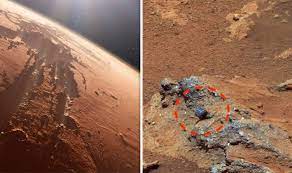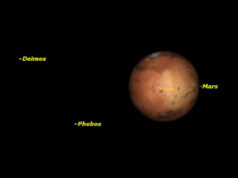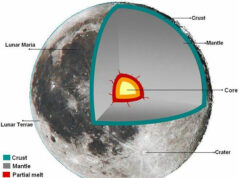In the Martian Alien Search with 239 Million-Year-Old Fossils, the pursuit of discovering extraterrestrial life leads scientists to an unexpected source: microscopic fossils embedded in ancient Earth lava rocks. A recent astronomy study emphasizes the value of these tiny Triassic fossils, concealed within seafloor basalt cracks. Their insights hold the potential to guide the quest for evidence of ancient life on Mars and other cosmic realms.

Microscopic Fossils as Clues
The study’s findings underscore the significance of microscopic Triassic fossils preserved in seafloor basalt from a volcanic eruption that occurred 239 million years ago in what is now Italy. Exploring Martian Alien Search via 239 Million-Year-Old Fossils unveils an unanticipated origin: microscopic fossils within ancient Earth lava rocks. As molten rock erupted from the seafloor, seawater quickly cooled it and caused it to solidify into rounded, black rock formations known as “pillows.” Over time, these basalt pillows developed small cracks that were subsequently filled with calcium carbonate, a mineral akin to that found in seashells. These calcium carbonate veins, now calcite, contain the microscopic remnants of ancient microbes that once inhabited the nooks and crannies of the cooled lava.
Relevance to Astrobiology
The presence of thriving underground ecosystems consisting of microbes within sedimentary and igneous rock has provided astrobiologists with valuable insights. Given their abundance on Earth, these microbes have become a focal point for potential life forms on Mars and beyond. Understanding how to identify and study long-extinct underground microbes on Earth serves as a foundation for devising strategies to uncover ancient microfossils on Mars.
Unveiling the Clues
Yuanggao Qu and a team of researchers from the Chinese Academy of Sciences conducted an analysis of samples from the Ladinian Fernazza in Italy. When they looked at the calcite veins, they found complex structures like “filaments, globules, and nodules,” as well as tiny versions of stromatolites, which are layered calcium oxide and sediment formations made by some types of bacteria. These formations bore a striking resemblance to modern bacterial colonies. Moreover, chemical analysis of these microstructures uncovered traces of chemical residue that align with substances often associated with microbial activity.
Implications for Martian Exploration
The discovery of these Earthly microfossils and chemical residues opens the door for future explorers seeking evidence of extraterrestrial life on Mars. By studying microfossils in rocks like the Ladinian Fernazza basalt, researchers can learn to identify what indications of ancient rock-dwelling microbes might look like, as well as determine the most effective methods for detection. This knowledge becomes particularly valuable in differentiating between ancient Martian life traces and potential modern contamination from Earth.
For more information read: https://oxfordre.com/planetaryscience/display/10.1093/acrefore/9780190647926.001.0001/acrefore-9780190647926-e-1?d=%2F10.1093%2Facrefore%2F9780190647926.001.0001%2Facrefore-9780190647926-e-1&p=emailAQUIJLfNmBf9I
As the quest for signs of life beyond Earth continues, the study of ancient microscopic fossils within Earth’s rocks offers critical insights. By understanding the clues hidden within the Triassic fossils of seafloor basalt, scientists can refine their approaches to identifying ancient microbial life on Mars. This journey of discovery underscores the remarkable parallels between Earth and the cosmos and underscores the importance of leveraging our planet’s history to illuminate the mysteries of the universe.
Read our other Articles: https://scitechupdate.com/index.php/top-7-technology-trends-of-2023-from-ai-to-5d-technology/
https://scitechupdate.com/index.php/waste-paper-to-battery-components-for-smarts-phones-vehicles/
https://scitechupdate.com/index.php/chemistry-entrepreneurship/
https://scitechupdate.com/index.php/android-14-satellite-sms-for-everyone/








[…] Read our previous articles: Utilizing 239 Million-Year-Old Fossils to Enhance the Search for Martian Aliens […]